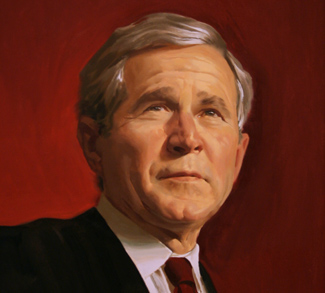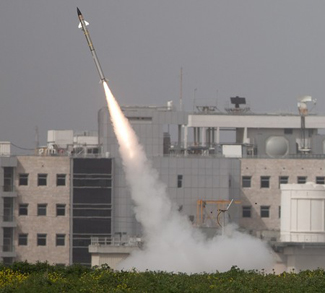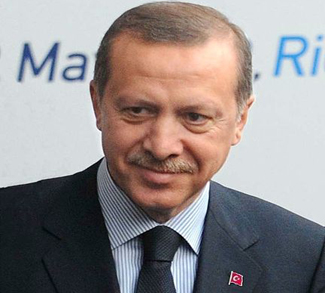In light of the recent escalation of violence between Israeli forces and Hamas-led Palestinian militant groups in Gaza since October 7, 2023, the relevance of Joe Sacco’s Footnotes in Gaza has become increasingly significant. Sacco’s graphic novel, first published in 2009, delves into the historical roots and enduring impacts of the Israeli-Palestinian conflict through meticulous journalistic inquiry and evocative storytelling. This essay explores the critical importance of revisiting Sacco’s work to understand the ongoing strife, emphasizing historical context, the human dimension of conflict, the power of visual narratives and the role of journalism.
Historical Context and Its Echoes
Footnotes is centered on the largely forgotten massacres in the towns of Khan Younis and Rafah during the 1956 Suez Crisis. Sacco’s investigation sheds light on these events, offering a detailed account that contrasts sharply with the often superficial coverage in mainstream media. Understanding these historical incidents is crucial as they set a precedent for the recurring cycles of violence and retribution that continue to define the Israeli-Palestinian conflict. Sacco’s work underscores the importance of historical memory in comprehending present-day conflicts, illustrating how past traumas and grievances fuel ongoing hostilities.
In Sacco’s Footnotes, the trope of historical context and its echoes is pivotal in illuminating the persistent undercurrents of the Israeli-Palestinian conflict. Sacco meticulously delves into the massacres of Khan Younis and Rafah during the 1956 Suez Crisis, events that have largely faded from collective memory but remain deeply ingrained in the Palestinian consciousness. Sacco ends his foreword with the following paragraph:
“As someone in Gaza told me, ‘events are continuous.’ Palestinians never seem to have the luxury of digesting one tragedy before the next one is upon them. When I was in Gaza [between November 2002 and March 2003], younger people often viewed my research into the events of 1956 with bemusement. What good would tending to history do them when they were under attack and their homes were being demolished now? But the past and present cannot be so easily disentangled; they are part of a remorseless continuum, a historical blur. Perhaps it is worth our while to freeze that churning forward movement and examine one or two events that were not only a disaster for the people who lived them but might also be instructive for those who want to understand why and how–as El-Rantisi said–hatred was ‘planted’ in hearts.”
One of those interviewed by Sacco and journalist Chris Hedges in their 2001 visit on a Harper’s magazine assignment to Khan Younis during the early months of the Second Intifada against the Israeli occupation was Abed El-Aziz El-Rantisi, a Palestinian political leader and co-founder of Hamas, along with Sheikh Ahmed Yassin. El-Rantisi was assassinated by an Israeli missile strike in March 2004. In November 1956 during the Suez Canal crisis, Israeli forces briefly occupied the at that time Egyptian-ruled Gaza Strip, when El-Rantisi was nine years old. His uncle was killed by Israeli soldiers.
I still remember the wailing and tears of my father over his brother,” he said. “I couldn’t sleep for many months after that…. it left a wound in my heart that can never heal. I’m telling you a story and I’m almost crying. This sort of action can never be forgotten….[T]hey planted hatred in our hearts.
Humanizing the Conflict
Sacco’s graphic novel excels in humanizing the conflict by focusing on the personal stories of Palestinian civilians who endured the 1956 massacres. This approach is particularly relevant today, as the human cost of the conflict continues to mount. In an interview Sacco was asked why his book Footnotes, which focuses on two massacres from 1956, also extensively covers housing demolitions in Rafah in 2003. Sacco responded that the 2003 events were significant enough to document on their own. Additionally, he wanted to illustrate how, for Palestinians in Gaza, “events are continuous.” He explained that for people whose experiences since 1948 have been dominated by violence and loss, reflecting on 1948 alone is impossible—there is no closure. Footnotes aims to capture the Palestinian experience of perpetual unresolved conflict, where each new injury brings forth memories of past ones. By doing so, the book portrays a sense of time that might be unfamiliar to many European and North American readers, where events are not strictly linear but instead maintain a continuous and pressing relevance.
Sacco’s work represents a form of ethical witnessing. He not only depicts the suffering of people in dire situations but also grapples with the complexities of his role as a journalist, cartoonist and Westerner who might be complicit in that suffering. His focus on different experiences of time, and the conflicts in describing history, is central to his role as a witness. While the notion that our choices in narrating history have significant ethical implications is not new, it often seems abstract. Sacco’s work brings this idea to life by detailing the human cost of different narrative approaches. The questions of whose history to depict and how to depict it are evident throughout the book. This is starkly illustrated when a Palestinian father, frustrated by Sacco’s insistence on discussing 1956 despite fresh Israeli bullets in his wall, exclaims, “Every day here is ’56!”
By providing a platform for the voices of ordinary people caught in the crossfire, Sacco reminds readers of the profound personal suffering that often gets lost in political and military analyses. The recent conflict has seen numerous civilian casualties, making Sacco’s emphasis on individual experiences a poignant reminder of the human dimensions of war.
The Power of Visual Narratives
The graphic novel format of Footnotes harnesses the power of visual storytelling to convey the complexities and emotional weight of the conflict. Sacco’s detailed illustrations and ability to capture the nuances of human expression and landscape draw readers into the narrative in a way that text alone often cannot. In the current media landscape, dominated by quick, fleeting images and soundbites, Sacco’s immersive visual approach offers a deeper, more sustained engagement with the realities of the conflict. This is particularly relevant as audiences seek to understand the ongoing violence beyond the immediate headlines and statistics. In an interview with the publication Mother Jones, Sacco states:
“My guide had a copy of Palestine on my last trip to Gaza. He’d bring it out and show people what I was trying to do. That usually went over pretty well. Because there were actually drawings I had made of Gaza before, they were able to look at it and say, “Oh, this is me, this is much like the refugee camp I’m living in.”
Footnotes serves as a prime example of experimenting with “new modes of telling stories about time.” Its focus on brief excerpts from decades-old United Nations reports and the narratives of elderly Palestinians—who represent the “footnotes” in the title. Footnotes explores different ways of narrating time through innovative uses of older comic forms. This is particularly evident in the book’s coda, a wordless three-and-a-half-page summary, demarcated by black pages, which encapsulates Sacco’s extensive account of the 1956 Rafah massacre occupying the book’s final third. The longer account presents an overlapping series of eyewitness testimonies, featuring inset portraits of interviewees and drawings depicting their memories. In contrast, the coda offers a brief, singular narrative seemingly from the perspective of a Palestinian man involved in the events. While the coda, read in isolation, might appear as one individual’s viewpoint, its placement at the book’s conclusion signals that it distills the repeated points of agreement from numerous oral histories, representing a consensus among Sacco’s Palestinian interviewees.
The Role of Journalism
Sacco’s work is a testament to the role of journalism in uncovering and documenting truths that might otherwise be forgotten or ignored. His meticulous research and commitment to presenting an accurate account of historical events serve as a model for investigative journalism. In the context of the current conflict, where misinformation and propaganda are rampant, Sacco’s approach underscores the necessity of thorough, unbiased reporting. It highlights the journalist’s duty to seek out and tell the stories that provide a fuller, more nuanced understanding of complex issues.
Building on this consideration of technique, the literature on Sacco’s work in critical geopolitics has further explored themes of positionality and representation. This includes his self-reflection on the journalistic process in war zones and his use of maps and abstract mappings to visually negotiate space. Trained as a journalist, he seamlessly blends reportage techniques with the comic book structure of dialogue, formatting and sequenced action. He operates as a journalist, comics artist and documentarian, leveraging this hybrid identity to convey the complex realities of geopolitical events. Sacco’s comics journalism is distinctive in its approach. Instead of downplaying the contributions of translators, interpreters, and other mediators, he often places them at the forefront of his narratives. His work on Palestine and Bosnia highlights, both linguistically and visually, the crucial roles of translators, interpreters, fixers and a network of informal contacts. Cultural translation is also a prominent theme, as Sacco portrays his challenges as a cultural outsider trying to navigate and investigate complex, sensitive, and divisive issues.
In an interview with the academic journal, Geopolitics, he states:
“Even including myself was not necessarily accidental but it came out of the tradition that I was working in at the time, autobiographical comics. And I didn’t have any theory of comics and journalism put together when I first went to the Palestinian territories. I wasn’t exactly sure of how I was doing or what I was doing. I thought of it as ‘Oh, I’ll tell my stories about my experiences in the Palestinian territories.’ It came out of a first-person travelogue is what I was probably thinking. When I was there, it became more journalistic just because that’s the way I was trained in college.”
Conclusion
Sacco’s Footnotes remains a profoundly relevant work in the context of the ongoing conflict between the Israeli regime and Hamas-led Palestinian militant groups. Its emphasis on historical context, humanizing the conflict, the power of visual narratives and the role of journalism provides essential insights that are crucial for understanding and addressing the current violence. As the world grapples with the latest escalation in Gaza, Sacco’s work serves as a powerful reminder of the enduring need to remember, document and seek justice for the past to pave the way for a more peaceful future.
The views expressed in this article belong to the author(s) alone and do not necessarily reflect those of Geopoliticalmonitor.com.




